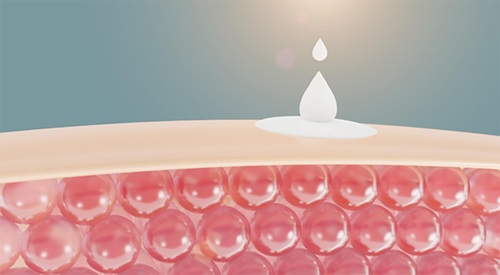
Understanding the Seven Layers of Skin: How Each Layer Impacts Your Skin Health
The human skin is a fascinating organ. With its multiple layers, it serves as your primary defense front against environmental threats. Each of the seven layers of skin plays a distinct role in protecting, regulating, and maintaining its health. From the outermost epidermis layers to the deepest hypodermis, these layers work together to shield your body, manage temperature, and even enable sensation.
The skin's layers and health are interconnected. Therefore, a comprehensive understanding of the role of each layer in skin barrier function and skin protection is essential to ensure healthy skin.

The Seven Main Layers of Skin
Layer 1: The Stratum Corneum (Epidermis - Outer Layer)
The Stratum Corneum is the outermost epidermis layer, primarily composed of dead keratinized cells. It acts as a protective barrier against external factors, including bacteria, UV rays, and pollutants. This outer layer also ensures skin hydration by preventing water loss. The dead cells in this layer are shed regularly for continuous renewal, essential for maintaining your skin's health and appearance.
Layer 2: Stratum Lucidum (Epidermis - Clear Layer)
The Stratum Lucidum is a clear, thin layer found only in the thick skin of your palms and soles. Since these parts of your body experience frequent friction, this clear layer acts as an additional shield. It is composed of dead cells and densely packed with eleidin, a clear protein that helps prevent water loss and provides a smooth surface for the skin layers above it.
Layer 3: Stratum Granulosum (Epidermis - Granular Layer)
Stratum Granulosum, the third skin layer, is composed of cells filled with keratin granules, an essential protein that contributes to skin strength and waterproofing. This layer marks the transition from the presence of living to dead cells as they move up toward the skin’s surface. It is involved in skin barrier function and prevents water from leaving the skin, thus playing a critical role in moisture retention and protecting against dehydration.
Layer 4: Stratum Spinosum (Epidermis - Spiny Layer)
The Stratum Spinosum, also called the spiny layer, is known for its spiny appearance due to desmosomes, which connect the cells tightly. It contributes to your skin’s strength and flexibility. This layer houses Langerhans cells, a vital part of your immune system that helps detect and fight off pathogens. Hence, this layer is essential in skin protection against infections and environmental stressors.
Layer 5: Stratum Basale (Epidermis - Basal Layer)
The Stratum Basale is the last or the innermost epidermis layer and is mainly responsible for producing new skin cells. This layer contains keratinocytes and melanocytes. While the keratinocytes contribute to skin protection, the melanocytes produce melanin, a pigment that determines your skin color and shields it against UV radiation. This basal layer is also marked by rapid cell division, which ensures the constant regeneration and repair of the epidermis.
Layer 6: Dermis (Middle Layer)
The Dermis layer lies right beneath the epidermis and consists of two parts: the papillary and reticular dermis. This skin layer contains collagen and elastin fibers, which provide structural support, flexibility, and elasticity to your skin. It also contains hair follicles, sweat glands, and nerve endings and houses blood vessels that supply nutrients to the skin and help regulate body temperature.
Layer 7: Hypodermis or Subcutaneous Tissue (Inner Layer)
Also known as subcutaneous tissue, the Hypodermis is the innermost layer of the skin. It mainly consists of fat and connective tissue, which acts as a cushion to protect the internal organs. The hypodermis functions as an energy reservoir, anchoring the skin, muscles, and bones beneath it. This layer, therefore, contributes to the overall stability and flexibility of the skin.
How Skin Layers Work Together to Protect and Nourish the Body
While each of the seven layers of skin has distinct functions, they also work together to protect your body from external threats and maintain internal balance. The epidermis has a skin barrier function against environmental damage, while the dermis layer offers structural integrity, flexibility, and nutrient delivery. In addition, the hypodermis function is to insulate and support the skin’s structure.
Use the Cetaphil AI Skin Analysis Tool for personalized product recommendations depending on your skin type.
Common Skin Conditions and How They Affect Different Layers
Different skin conditions impact different skin layers and health. Here’s more insight into the same:
● Eczema primarily affects the epidermis, causing redness and itching due to impaired barrier function.
● Acne usually penetrates deeper into the dermis, causing inflammation around hair follicles.
● Psoriasis affects the epidermis, causing rapid cell turnover and thick, scaly patches.
Tips for Maintaining Healthy Skin at Every Layer
Here are some tips to maintain your skin’s layers and health:
● Use gentle cleansers to preserve the stratum corneum’s protective barrier
● Hydrate regularly to keep the dermis nourished and elastic
● Use moisturizers with hydrating elements like hyaluronic acid to boost hydration in the deeper layers of your skin
● Follow a balanced diet rich in essential vitamins and minerals to support the hypodermis and your overall skin health
● Use sunscreen regularly to protect the epidermis from UV damage
CONCLUSION
The seven layers of skin work together seamlessly to protect, hydrate, and support your body. A thorough understanding of each layer's unique makeup and function will allow you to choose better skin care practices and products to maintain your skin’s health and resilience.
Frequently Asked Questions (FAQs)
1. How do the different layers of skin impact skin health?
Each of the seven layers of skin plays a unique role in maintaining overall health. Together, they protect the skin against environmental damage, regulate temperature, and maintain hydration.
2. What is the role of the epidermis in skin health?
The epidermis or the outermost skin layer protects the body from bacteria, UV radiation, and water loss. It also undergoes continuous regeneration by shedding dead cells and replenishing them with new ones from the basal layer, ensuring the skin remains resilient and well-protected.
3. How does the dermis contribute to skin resilience?
The dermis comprises collagen and elastin fibers, which impart strength and elasticity to the skin. It also contains blood vessels, sweat glands, and hair follicles, which are all essential for temperature regulation, nutrient supply, and skin flexibility. This layer's sturdy makeup supports overall skin resilience against physical stress.
4. What functions do each layer of skin perform?
Each skin layer serves a specific function in the body. The stratum corneum protects against environmental threats, the stratum basale generates new cells, the dermis provides strength, and the hypodermis insulates your body. Together, these layers maintain the integrity of your skin and contribute to its overall health.







.png?sw=450&sh=450&sm=fit&q=85)






